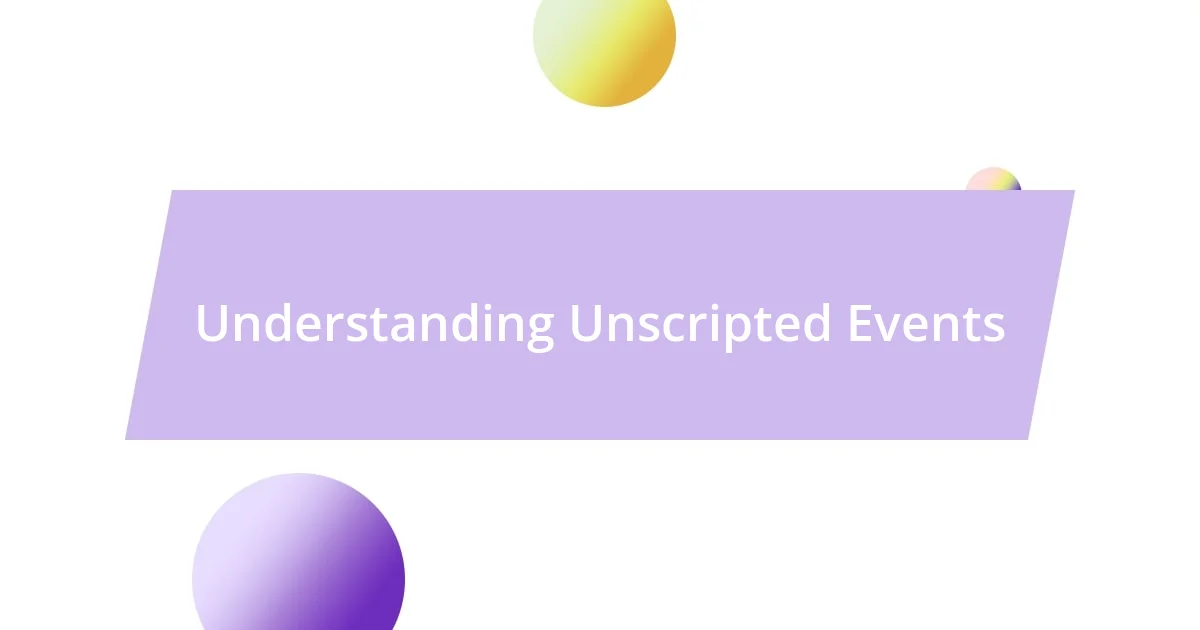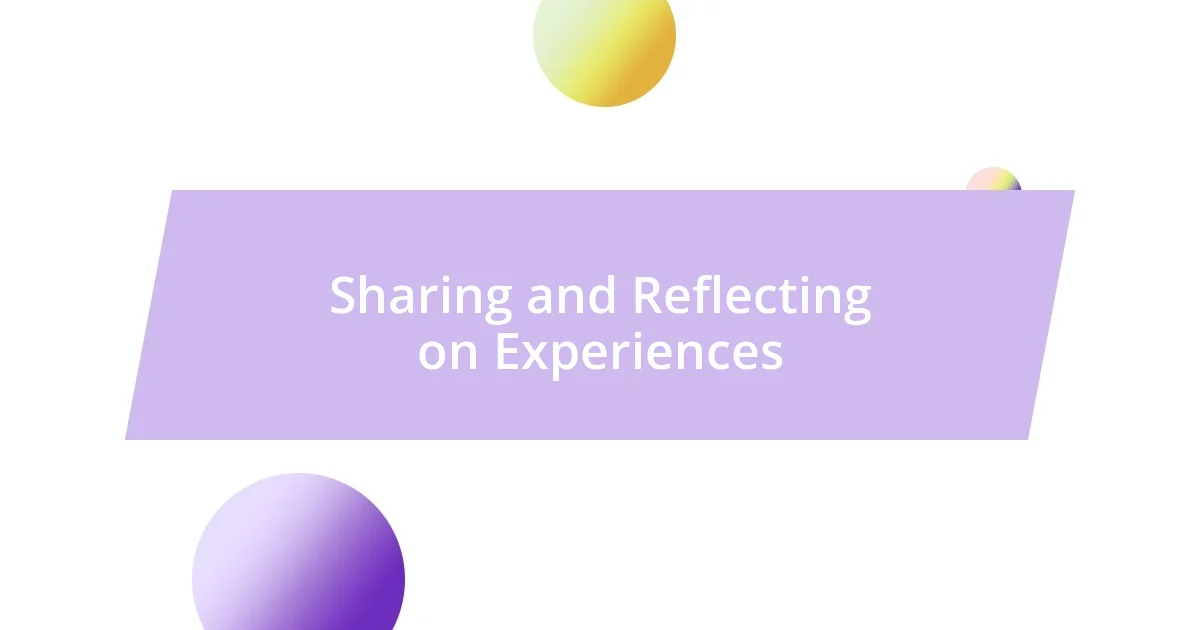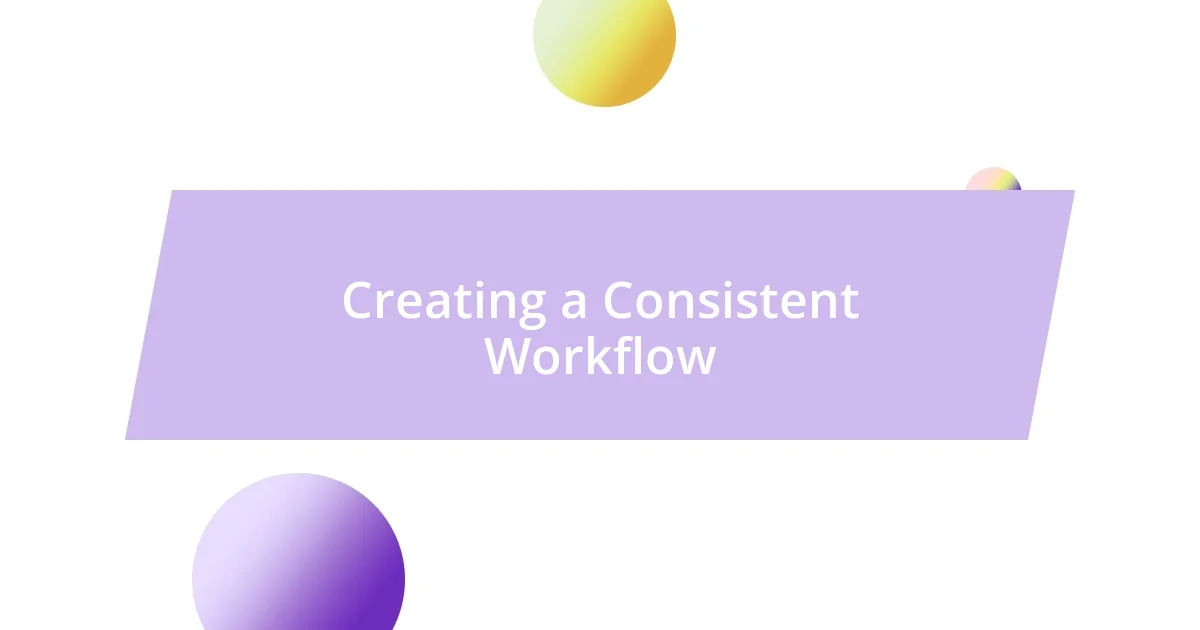Key takeaways:
- Unscripted events foster personal growth and cherished memories, often leading to valuable life perspectives.
- Documenting life experiences enhances self-reflection and appreciation, creating a legacy for future generations.
- Establishing a consistent workflow with the right tools and organizational strategies significantly improves documentation practices.

Understanding Unscripted Events
Unscripted events can be both exhilarating and overwhelming. I remember a time I spontaneously joined friends on a last-minute road trip. We didn’t have a plan, but that unpredictability turned into one of the most memorable weekends of my life. How often do we find that the things we didn’t plan become the stories we cherish the most?
These moments often disrupt our routine, prompting a shift in perspective. I’ve noticed that when life throws something unexpected my way, it’s an invitation to adapt and embrace change. Have you ever experienced an event that seemed chaotic at first but later revealed itself to be a significant turning point in your life?
Understanding unscripted events requires us to embrace uncertainty and be open to new experiences. It’s like standing at a crossroads with one path unmarked and full of mystery. While it can be daunting, these uncharted territories often lead to personal growth and unexpected joy. Don’t you find that the most beautiful moments sometimes emerge from those unplanned detours?

Importance of Documenting Life
Documenting life’s moments serves as a treasure trove of memories, capturing our journey in ways that simple recollection cannot. I once found an old journal filled with notes from a summer spent backpacking through Europe. As I read, I was drawn back to that carefree time, feeling the joy and thrill all over again. There’s a deep emotional connection that arises from revisiting those unscripted events, reminding us of who we are and where we’ve come from.
- It nurtures self-reflection, allowing me to evaluate how experiences have shaped my growth.
- Keeping these records fosters appreciation for life’s unpredictability, making the ordinary feel extraordinary.
- It creates a legacy, something tangible to share with future generations, providing them insight into our lives that words alone may not convey.
- Documenting allows us to acknowledge the beauty in chaos, showing how we can find light in even the darkest moments.

Choosing the Right Tools
Choosing the right tools for documenting life’s unscripted events is a vital step that can enhance the storytelling experience. From my personal journey, I’ve found that the tools I choose can dramatically impact how well I capture those fleeting moments. For instance, using a smartphone with a good camera allows for spontaneous photography, while a simple notepad is fantastic for jotting down immediate thoughts. Have you ever found that the tool you use can shift how you view an experience? It’s true; the right tool can elevate a simple moment into a cherished memory.
I’ve experimented with various tools over the years. From digital platforms like apps for journaling to good old-fashioned pen and paper, each offers a unique touch. Apps often allow for quick entries and photo integration, making it easy to document on the go. On the other hand, writing by hand can feel more personal, creating a deeper emotional connection to the event. Honestly, when I reflect on my past unscripted adventures, I often reach for my trusty notebook as it transports me back to those genuine feelings.
Ultimately, the choice boils down to what resonates with you. Finding the right balance between accessibility and personal connection is key. I’ve learned that it’s not just about the tool, but how you use it that truly defines your documentation experience.
| Tool | Advantages |
|---|---|
| Smartphone Camera | Quick access, easy sharing, and immediate capture of moments. |
| Digital Journaling Apps | Convenient, searchable, and allows for multimedia integration. |
| Traditional Notepad | Promotes thoughtful reflection and a personal touch. |
| Voice Recorder | Captures emotions and spoken thoughts effortlessly. |

Techniques for Capturing Moments
When it comes to capturing unscripted moments, spontaneity often yields the best results. I remember one evening while visiting a quaint little town, I stumbled upon a street musician playing an enchanting tune. Instead of just enjoying the music, I pulled out my phone, hit record, and captured both the melody and the ambiance. This little reminder of that night brings back a flood of emotions every time I play it—almost like I’m transported back to that vibrant moment. Have you ever captured something unexpectedly beautiful that you thought you’d forget? That feeling of joy can be relived, just through the simple act of documenting it.
Photography is another powerful technique I often rely on. I’ve participated in photo walks, where I deliberately wander my surroundings with my camera. The thrill of discovering hidden gems in everyday life is invigorating. One time, I took a picture of a random butterfly perched on a flower. The colors were so vivid, and the image turned out to be one of my favorites. I frequently revisit that photo, and it reminds me of the beauty that can be found even in life’s smallest moments. It makes me wonder—what wonders are hidden in your own daily life, just waiting to be captured?
Don’t underestimate the power of storytelling in your documentation. I’ve found that sharing my experiences verbally or through written entries deepens my connection to those moments. One rainy afternoon, I sat on my porch, pen in hand, pouring out my heart about my recent travels. The words flowed with such passion and detail; I could feel the sun on my skin and the excitement in my chest all over again. It sparked joy in my heart just to relive those unscripted adventures. How do you feel when you recount a cherished memory? Sharing our stories not only preserves moments but also invites others into our world, creating connections through shared experiences.

Organizing Your Captured Content
Organizing your captured content is where the magic truly begins. I often find myself sorting through a mix of photos, notes, and recordings that reflect my adventures. One time, after a trip to the mountains, I spread everything out on my living room floor and began categorizing them into themes—nature, friends, funny moments. It was like piecing together a puzzle that revealed my journey in a new light. Have you ever taken a moment to curate your memories? It can significantly enhance how you recall and relive those experiences.
I’ve discovered that creating separate folders, whether digital or physical, is an excellent way to keep everything in order. For example, I maintain digital albums for different events, and within them, I add subfolders for photos, videos, and journal entries. This not only makes it easy to find specific moments but also provides me with a comprehensive overview of each experience. It’s a bit like putting together a scrapbook—seeing everything collectively can evoke emotions I hadn’t tapped into before. How often do we forget the details of a lovely day just because they’re buried in a sea of unorganized files?
Another tactic I’ve embraced is tagging or labeling my content right after capturing it. I remember recording a short video of my nephew’s first steps and immediately adding keywords to describe the moment. When I look back weeks later, I can find that precious memory with just a click. It’s these little organizational strategies that breathe life into the documentation process. Have you tried tagging your experiences? If not, you might be surprised at how effortlessly you can revisit those treasured memories.

Sharing and Reflecting on Experiences
Sharing and reflecting on experiences is a deeply personal journey for me. I often find that when I share stories from my life, it not only helps me process them but also brings a smile to someone else’s face. For instance, I vividly recall a day spent on the beach with close friends. We laughed until our sides hurt as we attempted to build the sandcastle of our childhood dreams, complete with a moat. Each time I recount that story, I can relive the warmth of the sun and the sound of our laughter. Have you felt a rush of joy just by sharing a memory?
It’s fascinating how reflecting on experiences can unlock various emotions. I remember one afternoon, reminiscing about a hiking trip that took an unexpected turn when we got lost. Instead of panicking, we decided to embrace the situation, and it became an adventure filled with laughter and bonding. That one moment of uncertainty transformed into a cherished memory I frequently revisit in conversations with my family. What about you? Do you find that your most beautiful memories often come from the unpredictable twists in life?
I’ve also noticed how sharing experiences creates a sense of community. During a recent gathering, I shared my rollercoaster of emotions while volunteering at a local shelter. The reactions I received—sympathy, laughter, and even advice—made me realize the power of connection through our shared stories. It struck me how everyone has gone through their own versions of challenges and triumphs. Have you ever felt that sense of camaraderie when discussing your life experiences? It’s a gentle reminder that we’re all navigating this unpredictable journey together.

Creating a Consistent Workflow
Creating a consistent workflow can be a game changer in documenting life’s unscripted events. I remember when I first started this journey; my method was chaotic. I decided to set aside specific times each week for organizing and reflecting on my content. This established routine not only made it easier to compile my memories but also allowed me to approach the task with a clear mind. Have you ever considered how setting a schedule could influence your documentation process?
Alongside a regular timing, I believe in the usefulness of templates. For instance, I created a simple template for journaling my experiences — a few bullet points to capture the highlights, emotions, and lessons learned. This has become my go-to method to ensure I don’t miss any critical details. When I look back at these entries, it feels like I’m stepping back into that moment, vividly tethered to my emotions. How often do you find yourself reflecting on the small details that often slip away unnoticed?
Another element I incorporate is a “review day.” Once a month, I dedicate time to revisit my collected content. I analyze what resonated with me most during that period and identify patterns or themes in my experiences. This practice not only reinforces my memories but often sparks new ideas for storytelling that I hadn’t considered before. It’s fascinating how much we can learn from ourselves when we take the time to look back. Do you have a similar practice in your documentation process?














